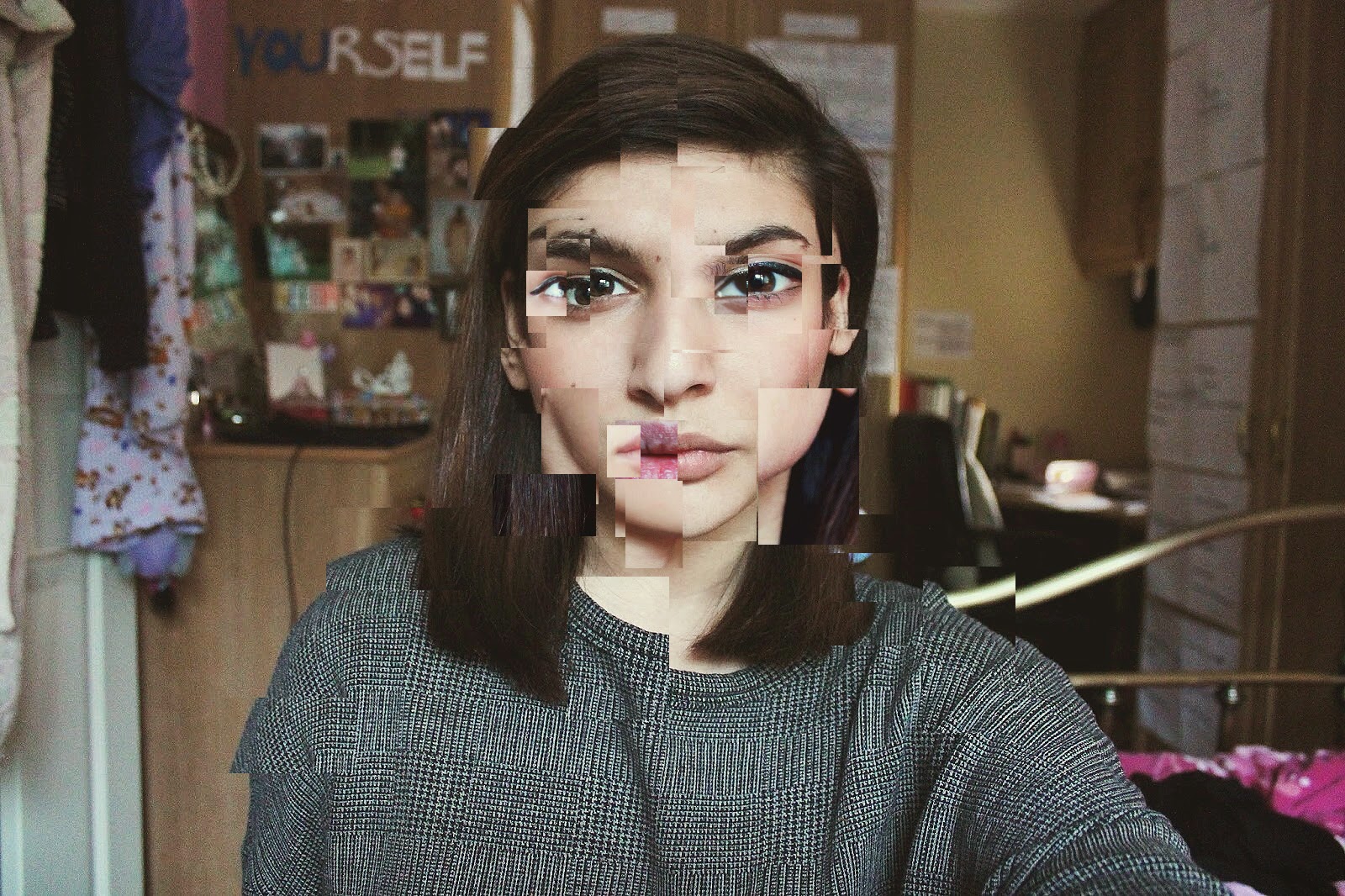From the idea of being 'all over the place' in my sanctuary, I developed into using a most sophisticated touch of actually adjusting the face of a person, my face. The idea of not being able to see my face so much in the development called 'Distorted Bedrooms' prompted me to think of a technique where my face was more visible.
I came across the photographer David Hockney, who began his studies in 1959 at the Royal College of Art, London. Hockney works through painting, drawings, photos, graphics and stage design. I concentrated on his photograph work which is split into Photographic collages and composite Polaroids. He created a style of photography that involves standing in one place and photographing a scene or object in pieces like a puzzle. It's a technique called Cubism where objects are broken up and reassembled in an abstract form instead of depicting objects from one viewpoint its put together to is depicted from multiple view points to represent the subject in a detailed context. Hockney made a comment on photography that:
"I’ve seen professional photographers shoot hundreds of pictures but they are all basically the same. They are hoping that in one fraction of a second something will make that face look as if there were a longer moment…If you take a hundred, surely one will be good."
David Hockney's Work:
My intentions for my project are not entirely similar to David Hockney's work insofar as capturing something more than once to see multiple view points. It was the idea of cubism I wanted to adapt in my work to show distortion in a person in their bedroom. I explored long exposure in my previous development page (Distorted Bedrooms) and wanted to be able to show a clear face of somebody's and their raw emotions. Within the image I want to be able to reassemble the face to show how fragments could be missing or not aligned with the rest of it. On Photoshop I used this image of me as child as a example and tester to try out the cubism technique. By simply highlighting which part I wanted to copy I pasted it as a new layer creating a uneven and reassembled face to represent distortion but also the raw emotion be visible. This was my first attempt at the technique:
I developed into taking multiple shots of myself as David Hockney's style of cubism and capturing multiple different perspectives. My aim was to show the fragmented generation I am living in now different angles so I tried to add together the images subtly. These image's are the one's I copied parts out of and stuck onto base image:
This was my outcome after using the technique:
I developed the idea of using the space of the background to show me as a person. This was just used as an example with previously taken images included in initial photography. I had the idea to show the fragmented mind by using the cubism technique and include layered images using Photoshop. I shaped the images out and layered them over each other and others given a faded look as though it was a part of my room. The quote in the right side corner looks as though it's a part of my room and with it being a quote it's already targeting at 'My Generation' in the sense that we play with words as though they are nothing. But when we want to relate to something and get that satisfaction that someone out there in the world knows how we are feeling; words are the only thing we rely on. This image was taken on tripod but shot as a selfie as per selfie it isn't always professional so I used the tripod to help composition be easy and not distract the main focus in the image which is me and what surrounding me.














No comments:
Post a Comment